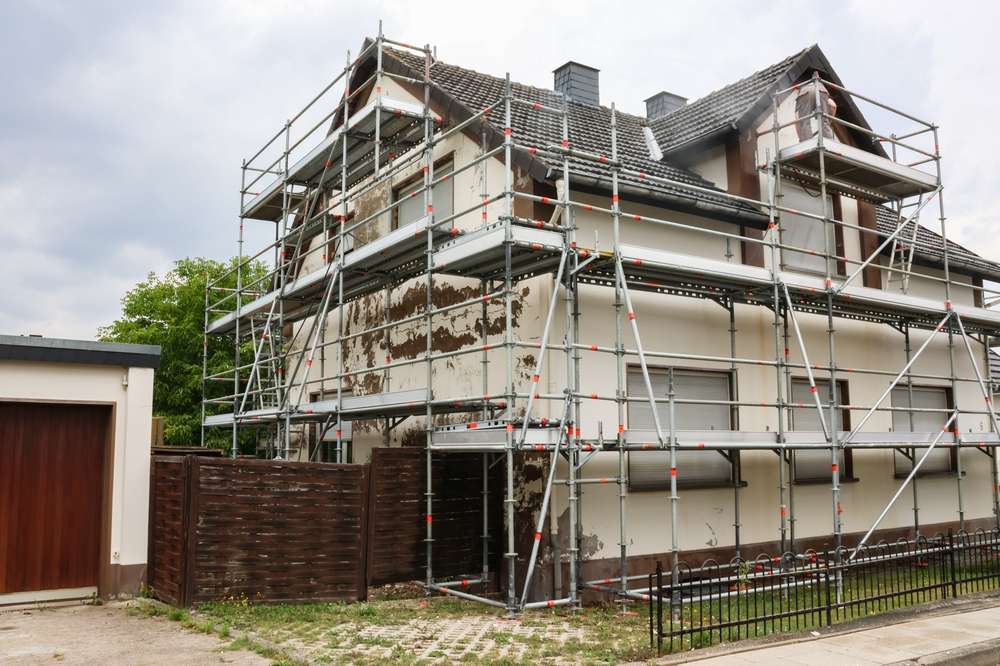A comprehensive guide to roof replacement in the UK
The roof is a home's first line of defence against the UK's harsh weather. While replacing a roof is a significant investment, understanding the interplay between materials, size and regional prices can help homeowners make an informed decision. This guide details the costs and considerations of replacing a roof in the UK, along with practical advice.

What materials are available for roof replacement?
When considering a roof replacement, homeowners in the UK have several material options to choose from. The most common materials include:
-
Slate: Known for its durability and classic appearance, slate is a popular choice for traditional homes. It can last up to 100 years but is one of the more expensive options.
-
Clay or concrete tiles: These offer excellent longevity and are suitable for various architectural styles. They’re more affordable than slate but still provide good durability.
-
Asphalt shingles: A cost-effective option that comes in various colors and styles. While not as long-lasting as slate or tiles, they’re easier to install and repair.
-
Metal roofing: Gaining popularity due to its longevity and energy efficiency. Metal roofs can last 40-70 years and are available in various styles, including standing seam and metal tiles.
-
Flat roofing materials: For homes with flat or low-slope roofs, options include EPDM rubber, TPO, and built-up roofing (BUR).
What is the average cost of replacing a roof in the UK?
The cost of roof replacement in the UK can vary significantly based on factors such as roof size, material choice, and location. On average, homeowners can expect to pay between £5,000 and £15,000 for a complete roof replacement. However, prices can go higher for larger homes or premium materials like slate.
Here’s a breakdown of average costs for different roofing materials:
| Material | Average Cost per m² | Estimated Total Cost (150m² roof) |
|---|---|---|
| Slate | £40 - £80 | £6,000 - £12,000 |
| Clay Tiles | £35 - £60 | £5,250 - £9,000 |
| Concrete Tiles | £25 - £45 | £3,750 - £6,750 |
| Asphalt Shingles | £25 - £40 | £3,750 - £6,000 |
| Metal Roofing | £40 - £70 | £6,000 - £10,500 |
| Flat Roofing (EPDM) | £35 - £60 | £5,250 - £9,000 |
Prices, rates, or cost estimates mentioned in this article are based on the latest available information but may change over time. Independent research is advised before making financial decisions.
What incentives and subsidy programs are available for roof replacement in the UK?
While there aren’t specific nationwide subsidies for standard roof replacements, some incentives may apply in certain situations:
-
Energy efficiency grants: If you’re replacing your roof and improving insulation simultaneously, you might be eligible for energy efficiency grants or schemes like the Energy Company Obligation (ECO).
-
Listed building grants: Owners of listed buildings may be eligible for grants to help maintain or restore roofs with historical significance.
-
Home renovation loans: Some local councils offer low-interest loans for essential home improvements, including roof replacements.
-
Green Homes Grant Local Authority Delivery scheme: While the national scheme has ended, some local authorities still offer support for energy-efficient home improvements.
-
Solar panel incentives: If you’re considering installing solar panels during your roof replacement, you may be eligible for the Smart Export Guarantee (SEG) scheme.
What are the advantages and disadvantages of different roof materials?
Each roofing material has its pros and cons:
Slate:
-
Extremely durable and long-lasting
-
Aesthetically pleasing
-
Expensive
-
Heavy, requiring strong roof structure
Clay/Concrete Tiles:
-
Good longevity and fire resistance
-
Various styles and colors available
-
Can be heavy
-
May require additional structural support
Asphalt Shingles:
-
Cost-effective
-
Easy to install and repair
-
Shorter lifespan compared to other materials
-
Less environmentally friendly
Metal Roofing:
-
Long-lasting and energy-efficient
-
Low maintenance
-
Higher upfront cost
-
Can be noisy during rain or hail
How can I find an affordable roof replacement service in my area?
To find a reliable and affordable roof replacement service:
-
Get multiple quotes: Contact at least three reputable roofing companies for estimates.
-
Check credentials: Ensure the roofers are members of recognized trade associations like the National Federation of Roofing Contractors (NFRC).
-
Ask for references: Request and follow up on references from previous clients.
-
Compare warranties: Look for companies offering solid warranties on both materials and workmanship.
-
Consider timing: Some roofers offer discounts during their off-peak seasons, typically late autumn or winter.
-
Look for package deals: Some companies may offer discounts if you combine roof replacement with other services like gutter replacement or insulation.
What are some unique considerations for roof replacement in the UK?
When replacing a roof in the UK, keep these factors in mind:
-
Weather resistance: Choose materials that can withstand the UK’s varied climate, including wind-driven rain and occasional snow.
-
Planning permission: While most roof replacements don’t require planning permission, check with your local authority, especially if you’re changing the roof’s appearance or height.
-
Building regulations: Ensure your roof replacement complies with current UK building regulations, particularly regarding insulation and energy efficiency.
-
Historical considerations: If you live in a conservation area or a listed building, there may be restrictions on the types of materials and styles you can use.
-
Chimney and ventilation: Consider the condition of your chimney and ensure proper roof ventilation is incorporated into the new design.
Replacing a roof is a significant undertaking, but with careful planning and the right information, UK homeowners can make informed decisions that balance cost, durability, and aesthetics. By considering the factors outlined in this guide, you’ll be well-equipped to navigate the process of roof replacement and ensure your home remains protected for years to come.




